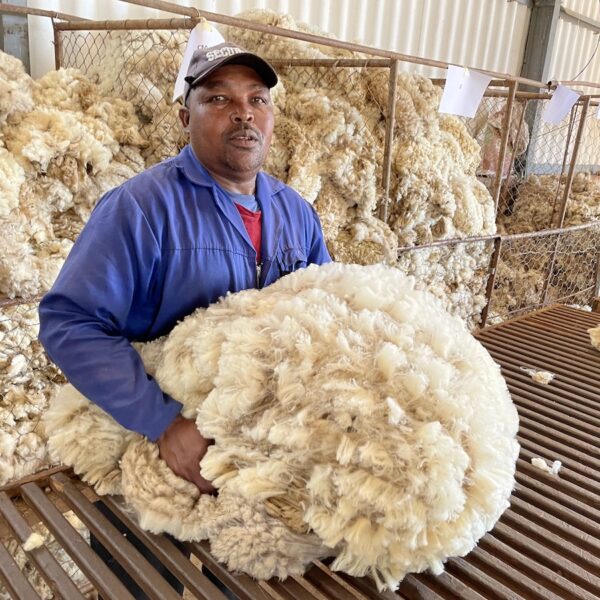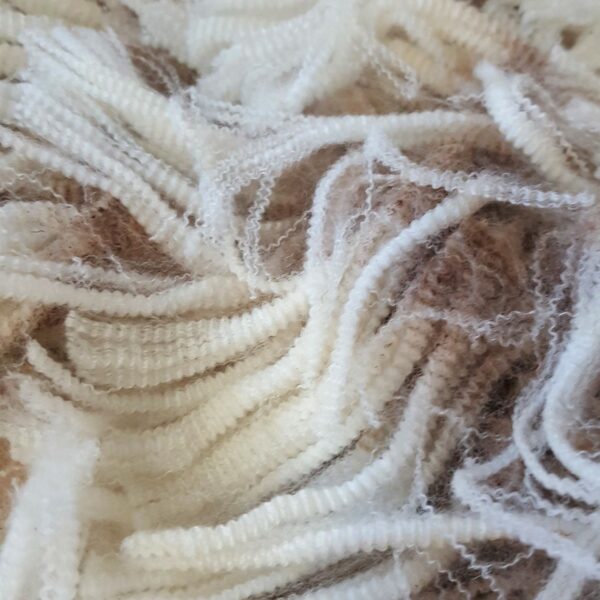Greasy Wool

Shearing, which is the regular removal of the sheep fleece, is necessary for the health and welfare of the sheep. The function of shearing is performed by shearers; skilled professionals who are trained in good shearing technique and animal care.
The greasy wool in its raw form contains suint (dust and dirt), vegetable matter (grass, straw and/or thistles) and grease. As a result, greasy wool cannot be used as is and requires a degree of processing to remove these unwanted substances.
During shearing, the wool may be baled immediately. However, it is preferable to class and sort it in the shearing shed prior to baling it. As part of the classing process, the lower quality parts such as the wool from the hindquarters and belly for example, are “skirted” and separated from the good fleece. Fleeces of similar quality are always baled together. Homogeneity is a criterion of quality (and therefore of price).
The quality of the shearing process is an important contributing factor toward the overall quality of the wool clip that is produced at the farm. Specific consideration should be given to the avoidance of foreign fibres (e.g. baling twine or plastic type fibres from torn feed bags), straw and “double cuts” wool (when the wool staple or strand is cut twice) during shearing.
At Segard Masurel, greasy wool is sourced from many countries, including South Africa, France, Australia and New Zealand, for use by our customers and for our own production.

The Properties of Wool Varies in Nature
Factors such as the breed of sheep, the climate and the type of environment will influence the characteristics of wool. As a result, the wool may be coarse or fine, short or long, range in white to yellowish white or grey/brown in colour and be more or less elastic in nature.
The important thing is to match the type of wool with the end product. For example, a finer wool is typically selected for comfort and softness in garments worn close to the skin, whereas a coarser stronger wool is ideal for use in a carpet, and a more elastic wool may be better suited as a filler material for bedding.

